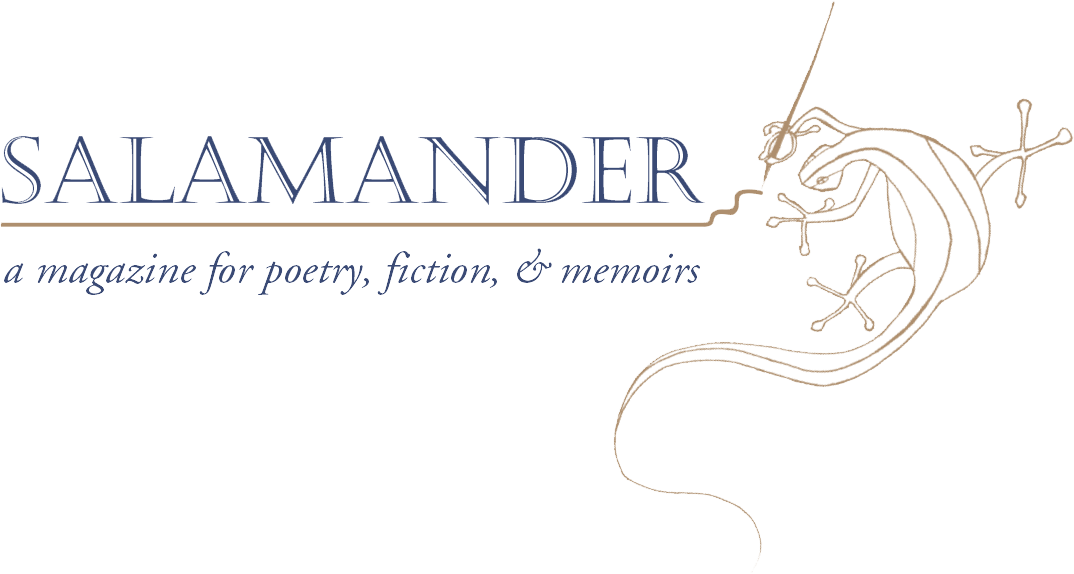Portal by Mary Pinard (Salmon Poetry, 2014).
When writing poetry about traumatic loss, words advance and retreat glacier-like, leaving writer and reader inexorably changed through engagements with form, the new shapes natural processes yield, the landscape that grief and healing make. Mary Pinard’s first book, Portal, is written about her brother who drowned, “his last/moments trapped in the galley of a sinking/tugboat.” The bluntness of her articulation exerts pressure that begins a dynamic exploration of how death reconfigures lyric form. One possibility Portal suggests is this—recreate the estuary, the site of one particular death as a place where life flourishes.
The sonnet-like form with its reassurance of containment falters when Pinard reaches the very question of continuing, the “someone asking how?” in line 13. Pinard’s landscape culminates two lines beyond a sonnet’s confines, its closure stalled at a freezer door pushed ajar by ice (that glacier-like grief): “Frost pressuring freezer seals, the door/never shutting all the way. Eyeglasses. Bookmark.”
But in what would have been the volta in the 9th line, the doubly charged “Change” is both currency and the imperative facing Pinard. While everything before that line brushes against items of no or questionable usefulness (the memento mori of “a snakeskin,” “bird bones,” “a lock/of hair”), her poem turns to “someone asking how” (asked of and by the living); that is her ultimate concern. The immensity of the question forces her to extend what would be a sonnet—in sequence, in diction, in meter and line-length. Pinard’s book takes on this formal challenge and many others as bereavement remakes (re-marks) traditional stanza shapes (tercet, quatrain).
Pinard confronts the couplet in “Diving Lesson”—an early attempt to enter the water herself—with this result: “I would die/to know where they are right now, and if they still believe.” One half of the couplet severely amputated molds a form to be confronted later, when, for instance, in “On a Picture Taken, Our Brothers on the Grays Harbor Jetty, Arms Outstretched”:
...It shows our two brothers
on the jetty, old boulder piles just yards from
the estuary where your tug sank, their arms outstretched,
and even the tips of their fingers reaching, as if to fathom.
The enjambments spilling over mirror how Pinard adjusts her earlier sonnet-like shape—leaving the door open, so to speak—and though the couplets are still shaped by grief, they now get more breath.
held horizontal, pierced
into place by metal pins,
and ready for the cutting
tool, a fine blade to be laid
freehand on the bark—more
pressure here, less—
as it’s peeled and grooved
at the same time.
Here again enjambment marks out the grooves of free verse (her freehand), the lines “pierced/into place by metal pins” of shortened tercets. In this way, Pinard guides us into understanding how to receive her book.
open, encircling all that had been
inside—doors, drawers, bunks—now
outside, heaped on the pier,
upended.
This is how grief moved through her, in the thrusts of the enjambed lines, the clatter of three line stanzas that dwindle to two—again, an amputated couplet, though this time the second line’s foreshortened. Before, the portal was kin with the freezer door unable to close, the sonnet shape burst of its contents, the author inside; now the portal becomes the porthole through which she sees in—the book shifts its perspective “outside.”
It is as if Dickinson’s “After great pain, a formal feeling comes –” which ends “As Freezing Persons, recollect the snow –/First – Chill – then Stupor – then the letting go –” was answered with a spring landscape populated in new diction, with everything from myth to larvae to the “welders and blasters” on the other side of the continent putting a tug together. Her “letting go” allows time to run forward again.
that sap: varnish left
for the nestlings?
Nestlings.
Portal is a dynamic portrayal of healing as form is torqued to its near breaking point and then reshaped. The beauty of Pinard’s craft lies in its carpentry. Take, for instance, those final two lines of “New Form” above. The question: “for the nestlings?” is a “someone asking how?” with, suddenly, an answer (the poet surprises herself with their appearance): “Nestlings”—the white ice field of the stanza break between. The hungry starlings from first poem live again in what’s been unfrozen. The reader sees the glacier retreat, leaving a pairing—nestlings?/ nestlings—porthole/portal—as an answer.
